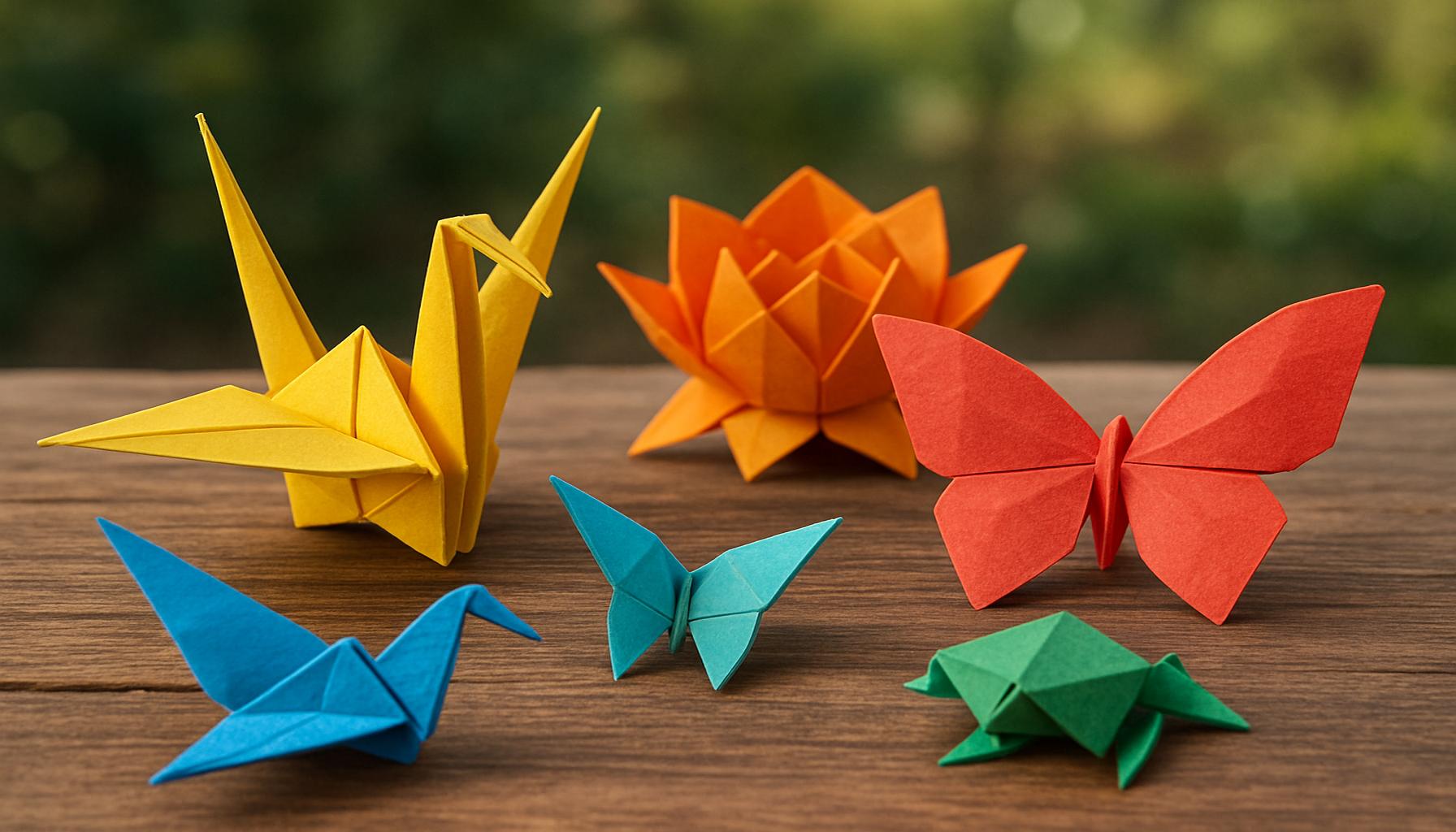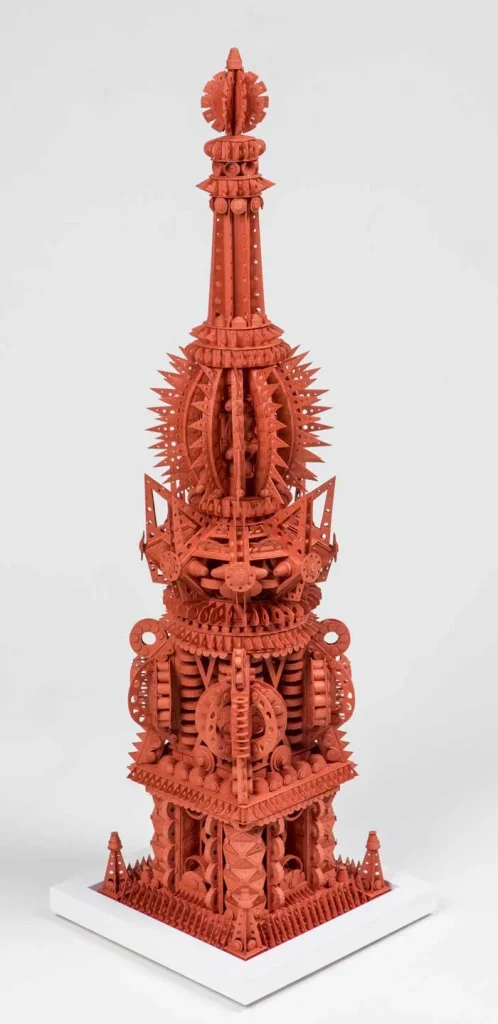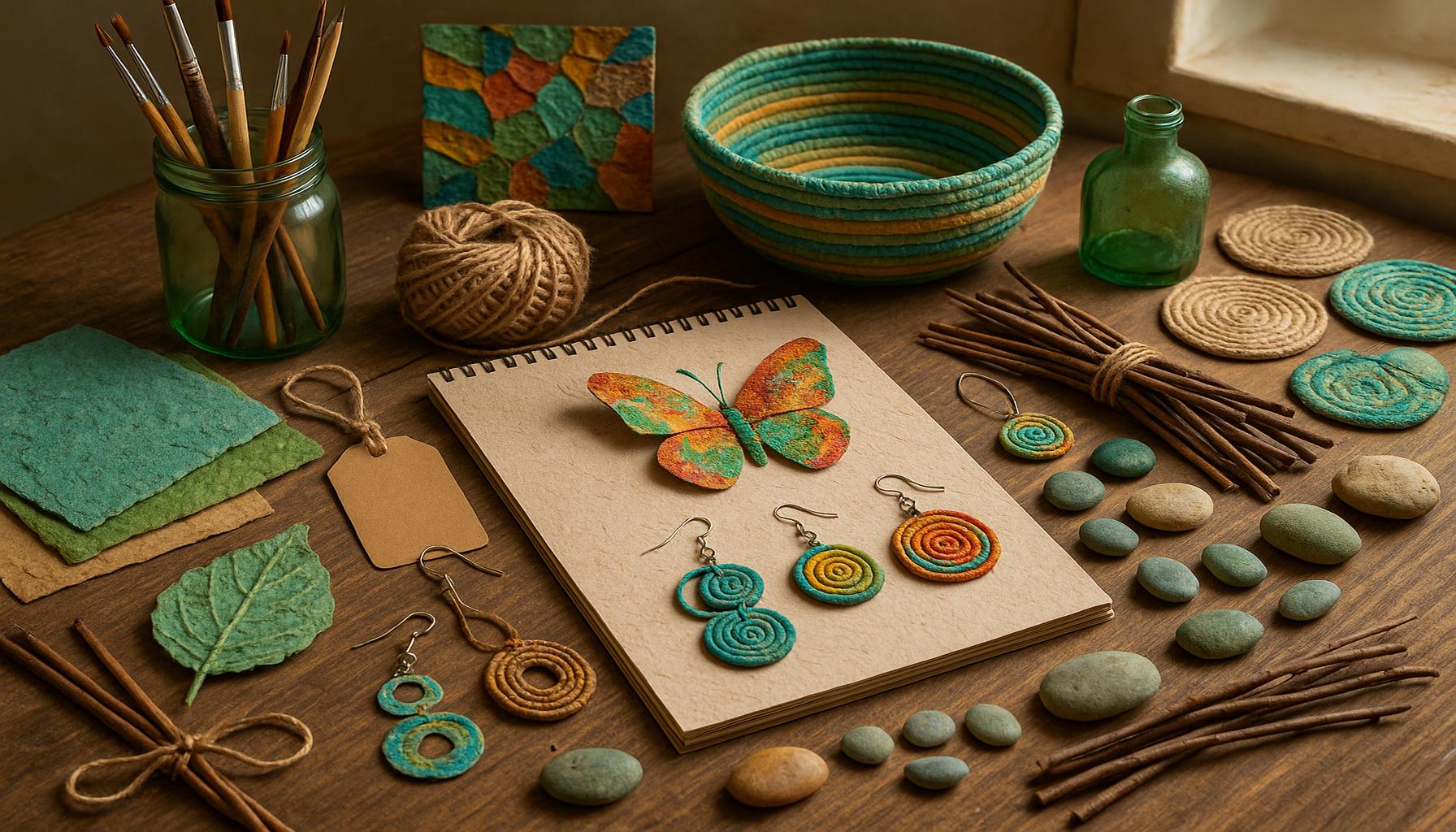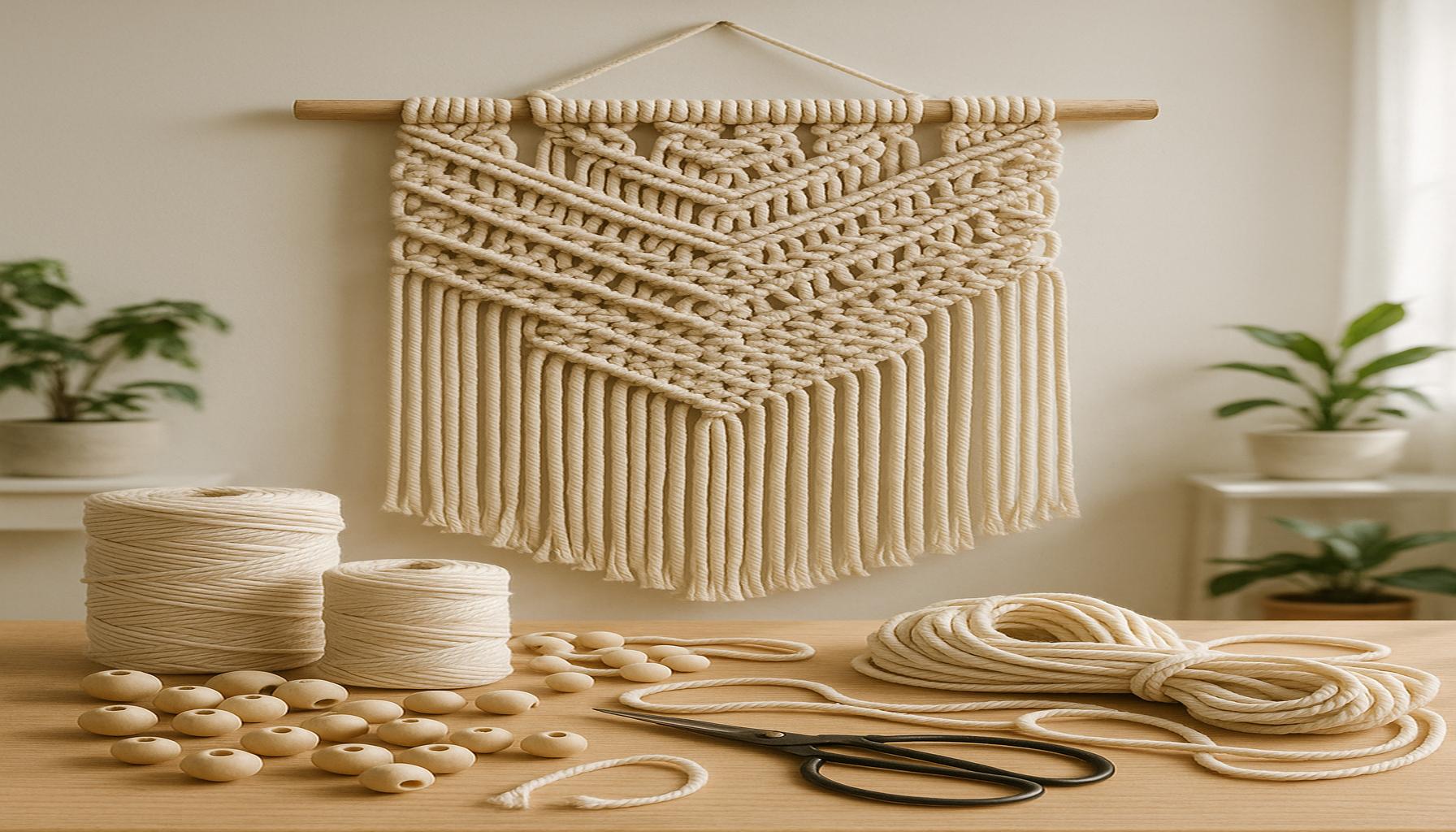The Art of Origami: Transforming Paper into Three-Dimensional Sculptures

The Fascinating Journey of Paper Art
For centuries, the delicate practice of origami has captivated enthusiasts and artists alike. This ancient Japanese art form transforms a simple sheet of paper into intricate, three-dimensional masterpieces. The journey from a flat surface to a complex sculpture is both an exercise in patience and a celebration of creativity. Artists often start with a basic square paper, but as their skills improve, they may utilize specialized papers, such as washi, which are known for their durability and ability to hold folds beautifully.
Origami isn’t just about creating paper figures; it’s a blend of science, mathematics, and artistry. This captivating art involves:
- Precision folding: Each crease must be exact, as even the slightest mistake can alter the design significantly. Experienced folders often use tools like bone folders to achieve sharp, clean lines.
- Mathematical principles: Understanding geometry and angles is crucial to achieving perfection. The transformation of shapes relies heavily on geometric relationships, making origami a practical application of mathematical theories.
- Artistic expression: Infusing your personality into the designs allows for a unique creative touch. Artists can create themes in their work, from nature-inspired designs to abstract forms that evoke emotions.
From classic creations like cranes and boats to contemporary designs featuring animals and abstract shapes, the possibilities are endless. The development of various styles has further expanded the horizons of this art form:
- Modular origami: This technique involves combining multiple pieces of paper to create larger, more complex sculptures. Artists create pieces that fit together seamlessly, often producing impressive geometric structures.
- Origamic architecture: This innovative style transforms paper into architectural marvels, with designs that mimic buildings and bridges. These intricate models often showcase how folding techniques can produce stunningly detailed representations of real-world structures.
- Kirigami: A cousin to origami that includes cutting as part of its design process, allowing for intricate patterns and shapes that can pop out from the flat paper.
As we delve deeper into the art and techniques of origami, you will discover the rich history behind this practice, which dates back to the 17th century in Japan. Its influence has spread globally, leading to a resurgence in America, where art classes and workshops dedicated to origami have gained popularity. Notably, origami has been incorporated into educational curriculums, providing an engaging way to teach math and science.
Additionally, origami serves as a therapeutic exercise for many, offering a meditative escape from daily stress. Each fold opens up new creative avenues, making origami a timeless pursuit that’s more relevant than ever. Whether you’re a novice or an experienced folder, the world of origami invites you to explore, create, and connect through the simple elegance of paper.

DISCOVER MORE: Click here to learn about the evolution of crafting
The Techniques and Styles That Bring Origami to Life
The beauty of origami lies in its versatility and the numerous techniques involved in transforming flat paper into captivating three-dimensional sculptures. Folders can express their creativity and technical prowess through a variety of methods, each contributing to the endless possibilities of this art form. Understanding these techniques enhances appreciation for the complexity and depth of origami.
At the heart of origami is the concept of base folds, fundamental folds that serve as the building blocks for intricate designs. These base folds, including valley folds, mountain folds, and petal folds, are the essential skills that aspiring folders must master. Once these fundamentals are understood, artists can combine them into more complex maneuvers, leading to the creation of dynamic forms—from simple designs to awe-inspiring creations.
Here are some popular techniques that individuals can explore as they dive into the world of origami:
- Wet folding: This technique involves moistening the paper to make it pliable, allowing for smoother curves and more dynamic shapes. The moisture helps the paper maintain its structure after it dries, lending a sense of life to the final piece.
- Reverse folding: As the name suggests, this method requires folding the paper in the opposite direction of a previous fold. It’s particularly useful for achieving complex shapes and finishing touches, adding detail and depth to the designs.
- Squash folds: This technique allows artists to create flattened structures by pressing previously made folds inward, resulting in unique formations akin to the shapes found in nature, such as flowers and animals.
In addition to mastering these techniques, artists often explore different styles of origami, each offering distinct challenges and aesthetic qualities. Some popular styles include:
- Traditional origami: This style focuses on classic designs that have been passed down through generations, such as cranes, lilies, and frogs. These pieces are emblematic of the art’s roots and embody the rich cultural history of origami.
- Complex origami: As the name implies, this style incorporates advanced techniques to create intricate designs that may require multiple steps and precise calculations. Pieces in this category often feature elaborate details, showcasing the artist’s skill and dedication.
- Origami tessellations: This style emphasizes the folding of paper to create repeating patterns and geometric shapes, often resulting in stunning visual effects. Tessellations demonstrate how the principles of mathematics can beautifully converge with artistic expression.
As we continue to unravel the captivating world of origami, the rich tapestry of techniques and styles reveals not only the skill required to master this art form but also the joy and satisfaction that comes from transforming a simple sheet of paper into a stunning three-dimensional sculpture. Whether you’re drawn to the calming act of folding or the challenge of complex designs, the journey through origami is one that embodies creativity, precision, and the magic of paper itself.
The Intricacies of Origami
The art of origami is not just about transforming paper; it’s a meticulous process that combines creativity and mathematical precision. Each fold in a sheet of paper must be executed with accuracy to achieve the desired result, creating stunning three-dimensional structures from seemingly flat surfaces. From cranes that soar gracefully to intricate flowers blossoming in vibrant colors, origami represents both artistic expression and technical skill.
The Benefits of Practicing Origami
Engaging in origami offers a multitude of benefits, transcending mere craft. Enhanced cognitive abilities are among the primary advantages, as folding techniques develop spatial awareness and critical thinking. Children, in particular, can benefit from origami as it aids in strengthening fine motor skills while encouraging creativity.
Additionally, the meditative quality of origami promotes mindfulness, making it a wonderful way to reduce stress and improve focus. Many practitioners find that folding paper becomes a therapeutic activity, allowing them to escape the pressures of daily life.
Origami in Modern Art and Design
With its roots in tradition, origami has ventured into the realms of modern art and design. Artists and architects now use origami principles to inspire unique creations, such as intricate installations or innovative architectural designs that prioritize sustainability. Notably, origami has influenced various fields, including engineering and robotics, proving that the possibilities of transforming paper extend far beyond the paper itself.
| Category | Details |
|---|---|
| Cognitive Development | Origami enhances problem-solving skills and spatial awareness, making it an excellent educational tool. |
| Therapeutic Benefits | Practicing origami can reduce stress and promote mindfulness, providing mental health benefits. |
By exploring the complexities of this delicate craft, enthusiasts can discover endless possibilities, from art installations to scientific applications. The transformation of simple paper into magnificent figures not only captivates the eye but also inspires the mind. As we delve deeper into the world of origami, we uncover secrets that go far beyond what meets the eye, integrating art and science in a remarkable way.
DIVE DEEPER: Click here to discover the art of storytelling
The Cultural Significance and Evolution of Origami
As a captivating art form, origami is not only a testament to artistic expression but also a reflection of cultural heritage. The roots of origami can be traced back to ancient Japan, where it began as a ceremonial craft used in religious practices and offered as gifts during significant occasions. Its journey through history has enriched not only the art itself but also the communities that embrace it.
In Japan, traditional origami is steeped in meaning and imbued with symbolism. The crane, perhaps the most recognizable origami model, symbolizes peace and longevity. According to Japanese folklore, folding a thousand cranes grants the folder a wish, often associated with healing or happiness. This practice has inspired countless individuals globally, with notable figures, including Sadako Sasaki, bringing attention to the artistry of origami while intertwining it with poignant social themes like the impact of war.
Beyond its historical significance, origami has evolved and adapted as globalization has fostered cultural exchange. Contemporary artists have begun to push the boundaries of traditional methods, incorporating modern techniques and even technology. A noteworthy example is the rise of computer-aided design (CAD) in origami, enabling creators to explore intricate designs that may have been unfathomable with manual folding alone. Researchers use computational algorithms to optimize paper folding patterns while still maintaining artistic integrity, resulting in groundbreaking designs that resemble organic forms and complex geometries.
Moreover, origami has found its way into various fields beyond the realm of fine arts. The principles of folding and structural integrity have gained traction in engineering and architecture, leading to innovative designs in these industries. For instance, space agencies like NASA have tested origami structures for satellite deployment systems, utilizing the compactness and reliability of folded designs to save space and materials in a zero-gravity environment. This intersection of art and science highlights the creativity inherent in both disciplines, showcasing origami as a versatile medium with applications in diverse arenas.
In the United States, the growing interest in origami has culminated in the establishment of various organizations dedicated to the art form. The OrigamiUSA organization, for instance, aims to promote the understanding and appreciation of origami through education, events, and collaborations with artists worldwide. They host conventions, workshops, and exhibitions that invite enthusiasts of all ages to connect and share their passion for paper folding. Such gatherings nurture a sense of community and inspire people to explore the myriad possibilities of origami, providing resources to enhance their skills.
As origami continues to blossom through innovative practices and cross-cultural exchanges, its capacity to resonate with people of all backgrounds only seems to grow. From traditional designs that honor centuries-old customs to modern interpretations that leverage technology, the art of origami remains a dynamic expression of creativity and adaptability. It serves not only as a means of artistic exploration but also as a bridge connecting people across cultures, generations, and disciplines—truly transforming paper into sculptures that reflect the very essence of human ingenuity.
DIVE DEEPER: Click here to uncover the secrets of storytelling
Conclusion: The Enduring Allure of Origami
In summary, the art of origami transcends mere paper folding; it’s a multifaceted discipline that encapsulates creativity, cultural significance, and scientific innovation. Its origins in ancient Japan highlight how a simple piece of paper can become a symbol of peace and longevity, showcasing the profound values embedded within this craft. As we appreciate the beauty of traditional designs, we are equally captivated by the evolution of origami in contemporary contexts, where it harmoniously blends with technology and modern artistic practices.
This exciting fusion has opened new horizons, allowing origami to infiltrate various industries, including engineering and architecture. Notable advancements, such as the use of computer-aided design (CAD), have enabled artists and researchers to explore complex shapes and functionalities, positioning origami as not only an art form but also a practical tool in solving real-world problems. Such interdisciplinary applications serve as a testament to the art’s versatility and relevance today.
The growth of origami communities, like OrigamiUSA, fosters a spirit of collaboration and education that ensures this ancient craft continues to inspire and engage new generations. As the world becomes more interconnected, the sharing of origami techniques and innovations emphasizes a universal language of creativity that can bridge cultural gaps.
As we venture into the future of origami, its capacity to transform flat paper into mesmerizing three-dimensional sculptures invites us all to explore our own artistic potential. Whether as a personal hobby or a professional pursuit, embracing origami offers a gateway to understanding deeper narratives of human expression, scientific exploration, and cultural unity. The journey of paper folding is an ongoing one, and it promises to keep unfolding in ways we have yet to imagine.



